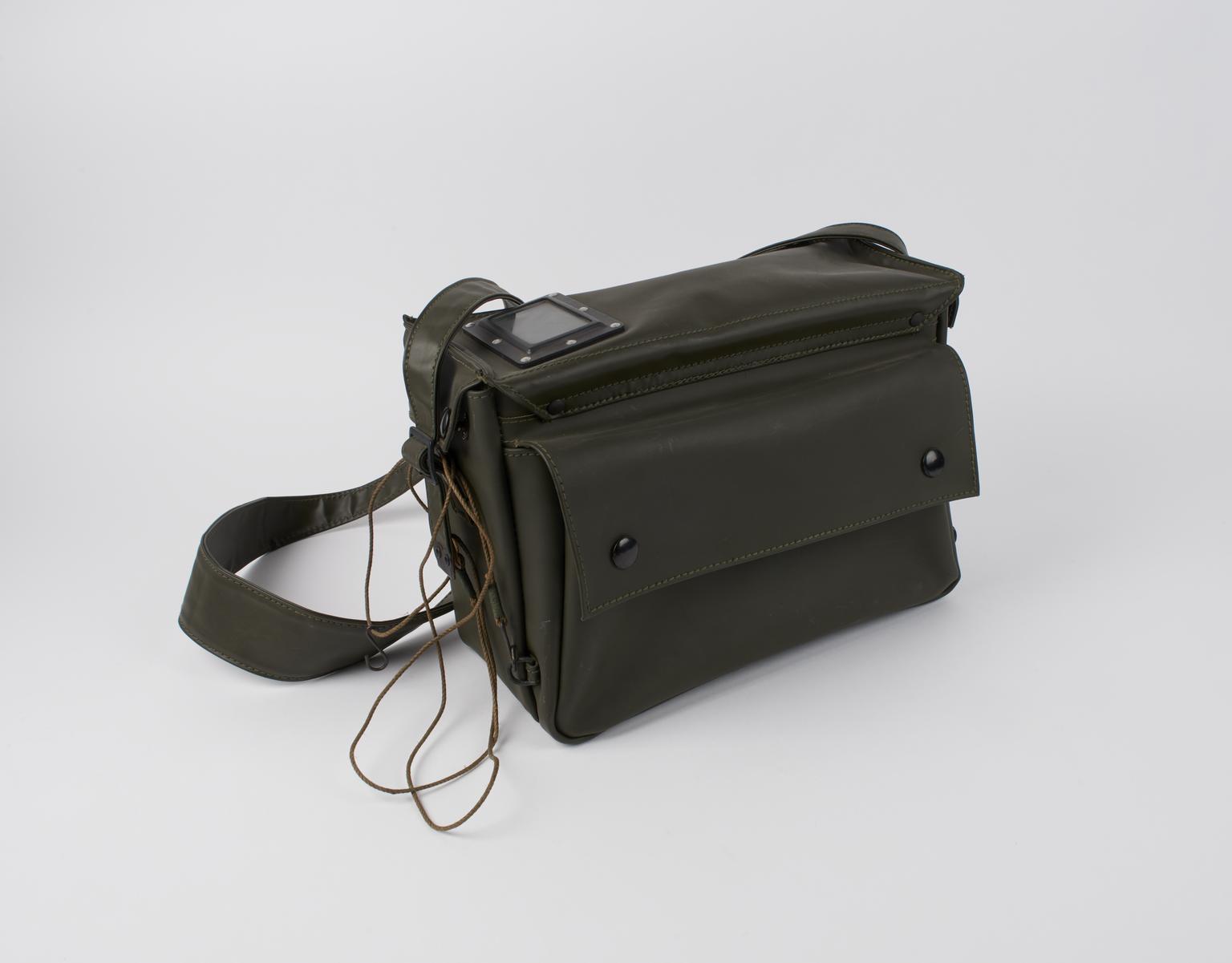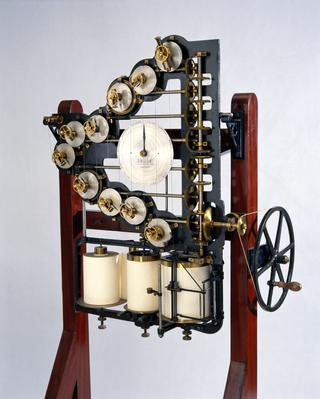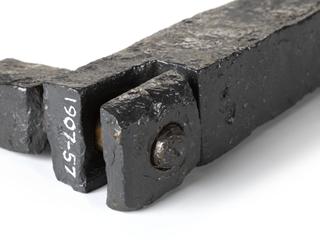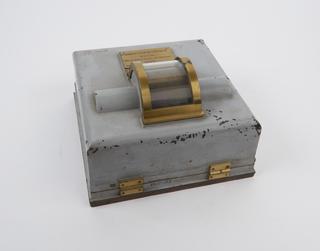
This portable scintillation ratemeter
This portable scintillation ratemeter is a model 1413A designed by the Atomic Energy Research Establishment in Harwell, and built by Isotope Developments Ltd in Aldermaston, between 1946 and 1958. This ratemeter was modified for the specific purpose of performing geological surveying.
The scintillation ratemeter is kept in a portable black leather case which can be unbuttoned to uncover different sections and panels of the ratemeter. The ratemeter itself has a wooden casing with an ammeter glass dial on the top (which can also be seen through the case via a cut-out in the leather casing). The wooden casing has its own plastic handle, and in the centre of the casing are the switches which turn on and adjust the ratemeter, as well as the jack for the ratemeter’s headphones. The casing also has this ratemeter’s serial number: No A 120.
The side of the casing has a screwable cap where the mercury battery cells are replaced.
More
Scintillation ratemeters are scientific instruments designed to measure the natural gamma radiation emitted by deposits of metals such as uranium, thorium and radioactive potassium. The first scintillation ratemeter was built in 1944 during the Manhattan Project which developed the first atomic bombs. This was done in some cases as part of health and safety, and to assess sources of hazardous radiation at sites. However, they were also used as part of identifying sites to mine and extract strategically important minerals, notably uranium. These activities started to become more prominent in the early 20th century as interest in radioactive elements grew alongside their practice and scientific applications. Geiger counters are the original radiation detectors, but scintillation counters and meters largely replaced them during the mid-20th century.
The key component in these devices is the scintillating material, which in the case of this ratemeter is a thallium activated sodium iodide crystal. This material is highly sensitive to radioactive particles, and when these particles hit the crystal, small amounts of photons/light are generated, which the ratemeter amplifies through a photomultiplier tube and then measures. Scintillation can be measured in a variety of ways. One way is for the light produced by the scintillation process to be transformed into electric current via a photocathode, which is measured by an ammeter. This electrical current can also be transformed into noises and then detected through headphones.
The precise measurement of light/photons being produced by the scintillation process is crucial to the effectiveness of these devices, and as such the scintillation material and photomultiplier must be enclosed in a way that prevents external light from effecting the ratemeters measurements.
This model of scintillation ratemeter, called the Type 1413A, was built by Isotope Developments Ltd between 1946 and 1958 to be portable and battery powered so that it could be used on field surveys on foot in a vehicle or aircraft. This model of ratemeter could run for approximately 400 hours on its batteries.
- Materials:
- wood (unidentified) and glass
- Object Number:
- 1958-229/1
- Image ©
- The Board of Trustees of the Science Museum





